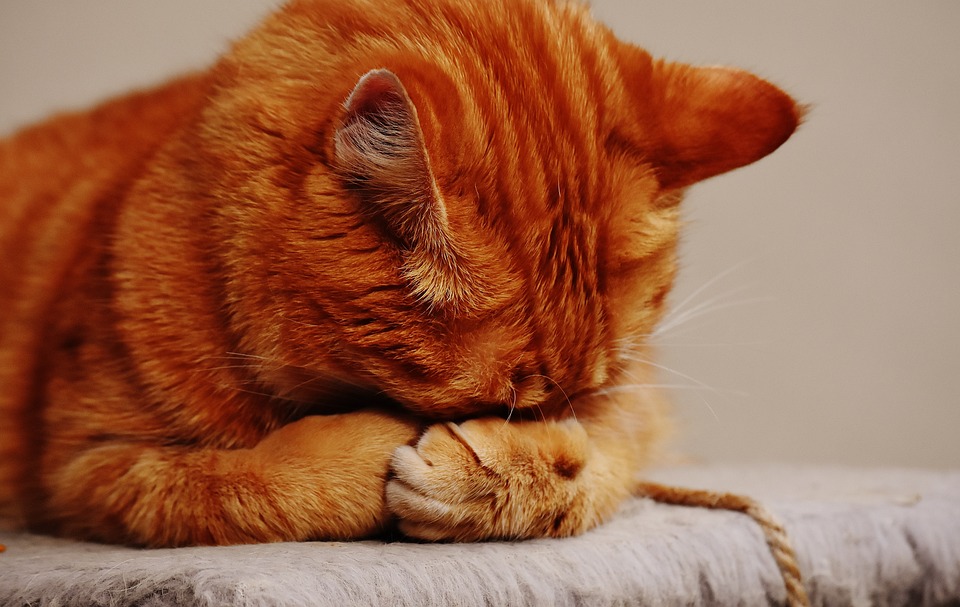Feline arthritis is a common condition that affects cats of all ages. As a responsible cat owner, it is important to recognize the symptoms of arthritis in cats and take appropriate steps to manage the condition. By understanding the signs and working closely with your veterinarian, you can help improve your cat’s quality of life and ensure they remain active and comfortable.
One of the most common symptoms of feline arthritis is joint stiffness and limping. Cats with arthritis may have difficulty moving around and may show signs of discomfort when walking or jumping. By observing changes in your cat’s gait and noticing limping or favoring certain limbs, you can identify potential signs of arthritis.
Another symptom to look out for is a decrease in activity levels. Arthritic cats may become less playful and show reluctance to engage in physical activities like jumping or climbing. They may also exhibit a reduced interest in playtime or exercise. These changes in behavior can be an indication of joint pain and should be addressed with your veterinarian.
Pay attention to any alterations in your cat’s grooming habits. Arthritis can make it challenging for cats to reach certain areas of their body, resulting in changes in their grooming routine. Look for matted fur or an unkempt appearance, as these may be signs that your cat is experiencing discomfort.
Changes in behavior can also indicate the presence of feline arthritis. Cats in pain may become more aggressive or irritable. They may also show a decreased appetite or changes in litter box habits. It is important to recognize these behavioral changes and consult a veterinarian for a proper diagnosis.
Managing feline arthritis involves a multi-faceted approach. The first step is to consult with a veterinarian for an accurate diagnosis and professional guidance. Your vet may recommend diagnostic tests to confirm the presence of arthritis and discuss treatment options and pain management strategies.
Medications and supplements can play a crucial role in managing feline arthritis. Prescription medications can provide pain relief, while joint supplements can support joint health. It is essential to administer medications as prescribed by your veterinarian and follow their guidance.
Weight management is also important for arthritic cats. Excess weight can put additional strain on the joints, exacerbating arthritis symptoms. Your veterinarian can recommend a suitable diet and portion control to help your cat maintain a healthy weight. Regular exercise, within your cat’s limits, can also help keep their joints mobile.
Creating a cat-friendly environment is another way to manage feline arthritis. Providing comfortable bedding and elevated resting spots can reduce the strain on your cat’s joints. Using ramps or steps can make it easier for them to access their favorite spots.
Physical therapy and exercise can also benefit arthritic cats. Gentle range-of-motion exercises and stretching can help maintain joint flexibility. Engaging in interactive play sessions can also promote mobility and keep your cat active.
In the frequently asked questions section, we address common concerns about feline arthritis. We explain that cats of any age can develop arthritis, although the prevalence may differ among age groups. We also clarify that feline arthritis is a chronic condition that cannot be cured, but symptom management can greatly improve a cat’s quality of life. We emphasize the importance of consulting a veterinarian for proper pain management and caution against self-medicating cats with over-the-counter pain medications. We also provide tips for helping arthritic cats during flare-ups and mention alternative therapies like acupuncture and laser therapy.
In conclusion, recognizing and managing symptoms of feline arthritis is crucial for the well-being of your cat. By working closely with your veterinarian and implementing appropriate management strategies, you can alleviate your cat’s pain and improve their mobility. With proper care, your cat can continue to enjoy a comfortable and active life.








